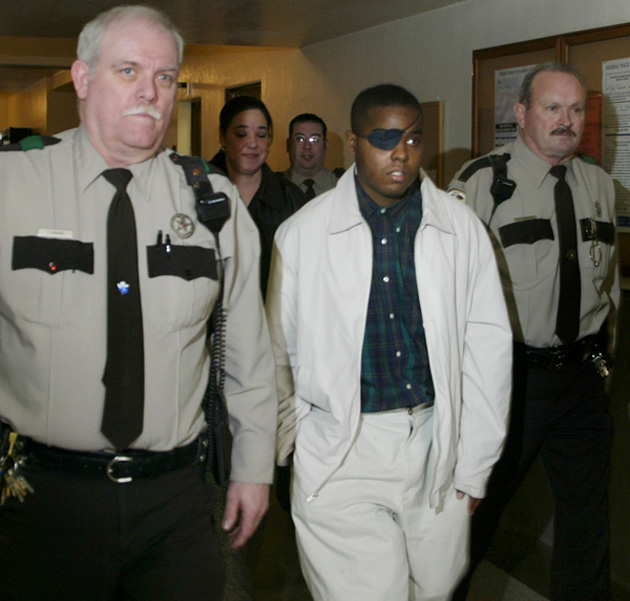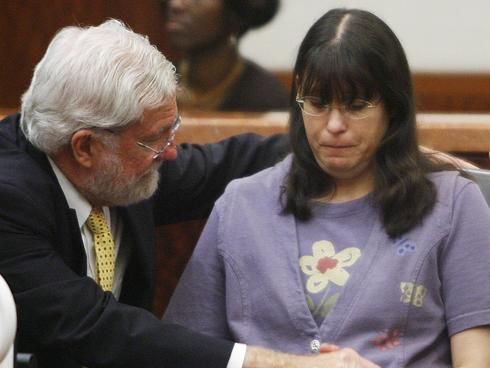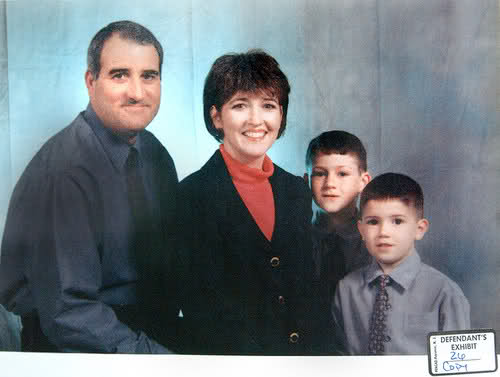By Chris Smith
“It probably started with Vivian, who claimed to have a gift from God—more of a torment, really. She believed she received divine messages through dreams and visions, only she ‘didn’t handle the gifts,’ as one of her children recalled. ‘They handled her,” writes Marc Bookman of Mother Jones.
Vivian Thomas, the woman Bookman is referring to, is the grandmother of Andre Thomas, the 29-year old Texan sentenced to death for the 2004 killings of his estranged wife, Laura Boren, their child, 4-year old Andre Jr., and Boren’s 1-year old daughter Leyha. The Texas Tribune reports that while awaiting trial (a trial with gross odds stacked against any possible acquittal), Thomas “gouged out his right eye with his bare hand.”
For Thomas, a man who had been enthralled by scripture since his youthful days at Harmony Baptist Church, tearing his eye out of his own socket, an act deemed horrendously impossible for most sane human beings, found a sort of justification in the gospel words of Matthew.
When mental illness and religion begin to intersect, how does one differentiate between dogmatic devotion and detached derangement? Matthew 5:29 reads: “If your right eye causes you to sin, gouge it out and throw it away. It is better for you to lose one part of your body than for your whole body to be thrown into hell.” Is it mere coincidence that a man plagued with hereditary mental illness from a young age (Thomas was repeatedly institutionalized for numerous suicide attempts, attempts that his mother would attribute to the increasing intensity of his auditory hallucinations), a man who exhibited an alarming biblical obsession, consciously and willfully decided to do the same self-mutilating act proposed by Matthew?
While on death row, time that consisted of “23 hours a day alone in a 6-by-10 cell,” Thomas’s mental health continued to spiral downwards. It is there where, according to Brandi Grissom of the Texas Tribune, Thomas “jammed his fingers behind his left eyeball and pulled it from the socket and ate it whole.” Surely, prosecutors saw this as an act consistent with the mental health and stability constitutionally required of the accused to stand trial. Right?
The case of Andre Thomas brings to the forefront a myriad of social dilemmas all too present in the news today. Accessibility to mental healthcare is marred by economic, geographic, and class lines (it should be noted that Texas is last nationally in spending on community mental health services). The treatment of mentally ill prisoners—actually prisoners in general (see Ann Neumann’s Guernica piece)—is marked by brutality and cruelty. The mentally ill are deemed competent enough to face the death penalty, even when every single moment leading up to the time of their crime was rife with mental instability, rather than given the help they desperately need.
But what also interests us here at The Revealer is the religious facet of the case of Andre Thomas. The line between religiosity and mental illness is often blurred. Passages from William James’s Varieties of Religious Experience can often read like scenes from Kesey’s One Flew Over the Cuckoo’s Nest. How many times, in the context of a trial for murder or some sort of heinous crime, have we heard the plea, “God told me to do it!” Why is it that such a plea led to a “Not Guilty by Reason of Insanity” verdict for Andrea Yates, the Texas woman who drowned her five children in a bathtub, claiming that Satan had made her children less “righteous” and more “disobedient.”
Or how about the case of Deanna Laney, the mother of two who killed both of her sons by stoning them to death in the back yard. She told members of her Assemblies of God church that God had instructed her to “get her house in order,” a claim that led to the same verdict Andrea Yates received. Ah, so religion can serve as a sort of verification of insanity in, for instance, the cases of two white women, but when Andre Thomas, an African-American male with a serious history of mental illness, is sentenced to death for killing his white ex-wife, “religion” provides no means for judicial salvation.
Though some claim “religion” is a scapegoat for those trying to avoid punishment in these instances, I would argue that the place of religion, in the case of Thomas and others, deserves more examination. Religion, in its many manifestations, can serve as a sort of theater for human thought and rumination. In this sense, the “R” word can have positive mental effects for an individual of the right state of mind. It can provide a sense of mental stillness for those who crave community and spiritual guidance. Yet, religion can be the cause of a backdraft or regression for those predisposed to mental illness. The theater of religion can turn into a place where the mentally ill can project and play out, as in the case of Thomas, their hallucinations, visions, and “messages from God,” in turn exacerbating the already deteriorated mental health of the ill.
Recently, the National Alliance on Mental Illness (NAMI) created a training program for church clergy on the ways to recognize mental illness among church members and the subsequent steps to be taken to regain the members’ health. Though there’s much to be done (on both the communal and national levels) concerning judicial rights (including racial inequality before the eyes of the law), mental healthcare, and prison reform to prevent another case like Andre Thomas’s, I’m thinking small steps such as the one made by NAMI is a move in a better direction.
Chris Smith is an undergraduate student in Religious Studies Program at New York University.




